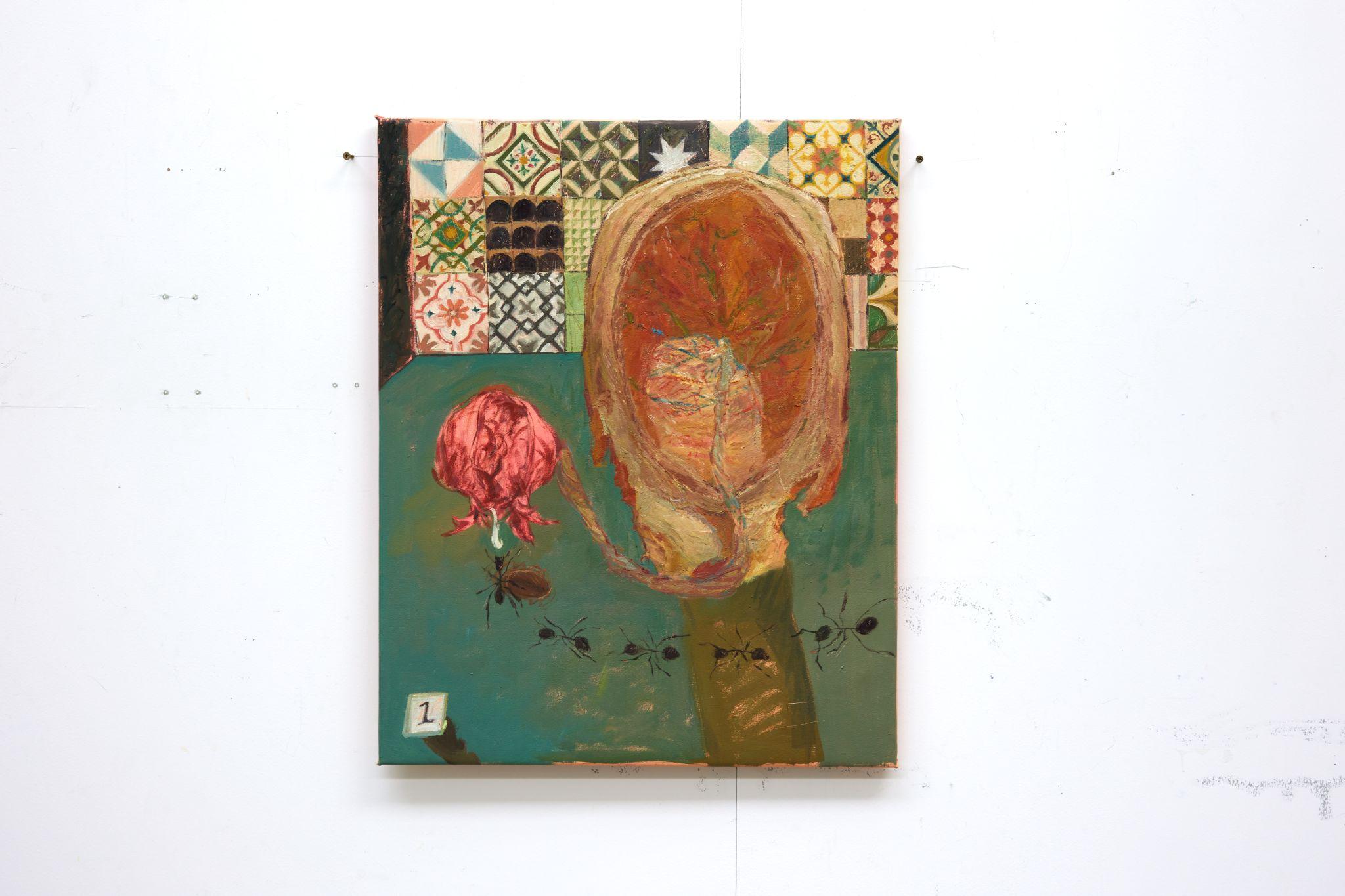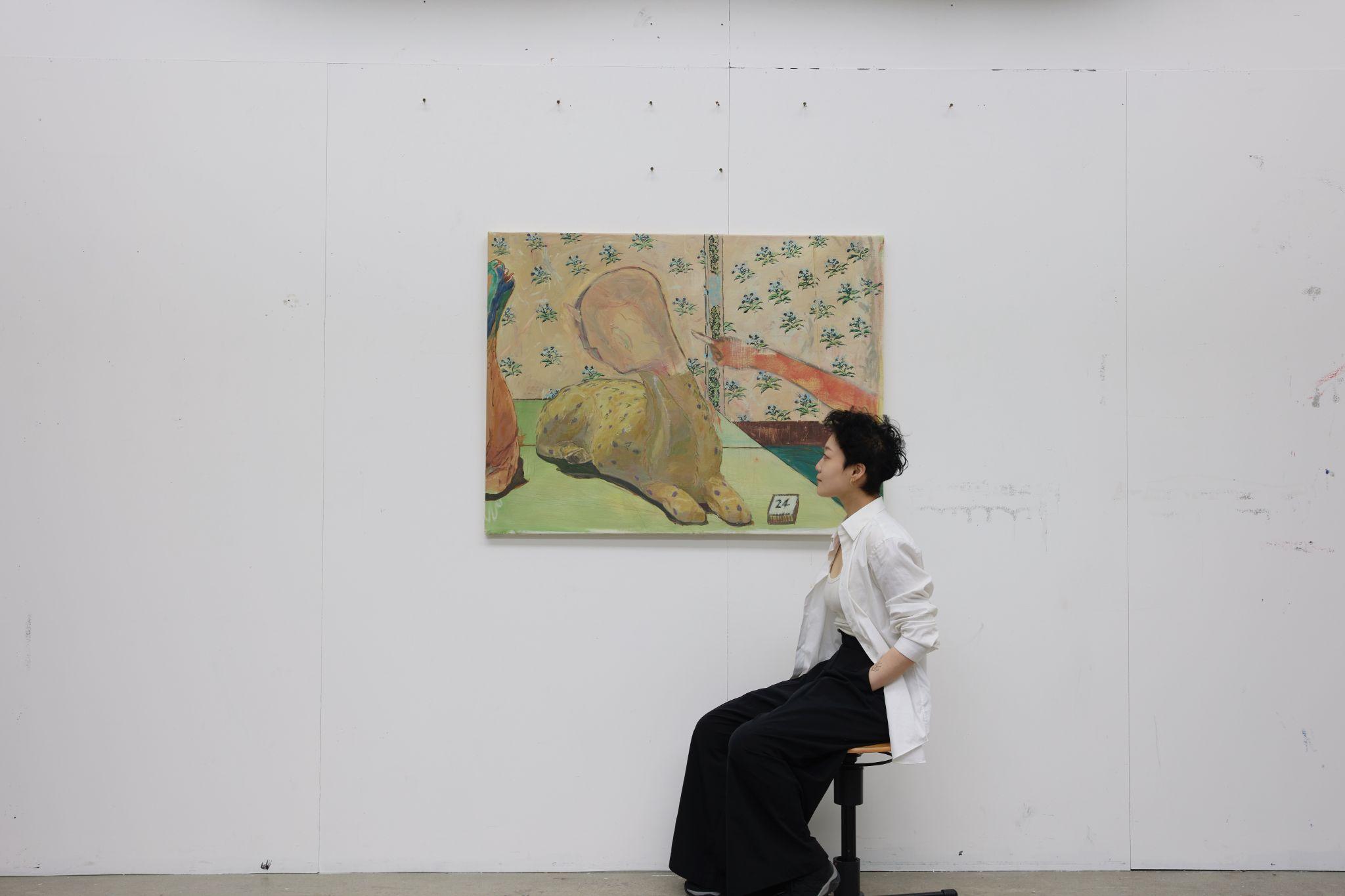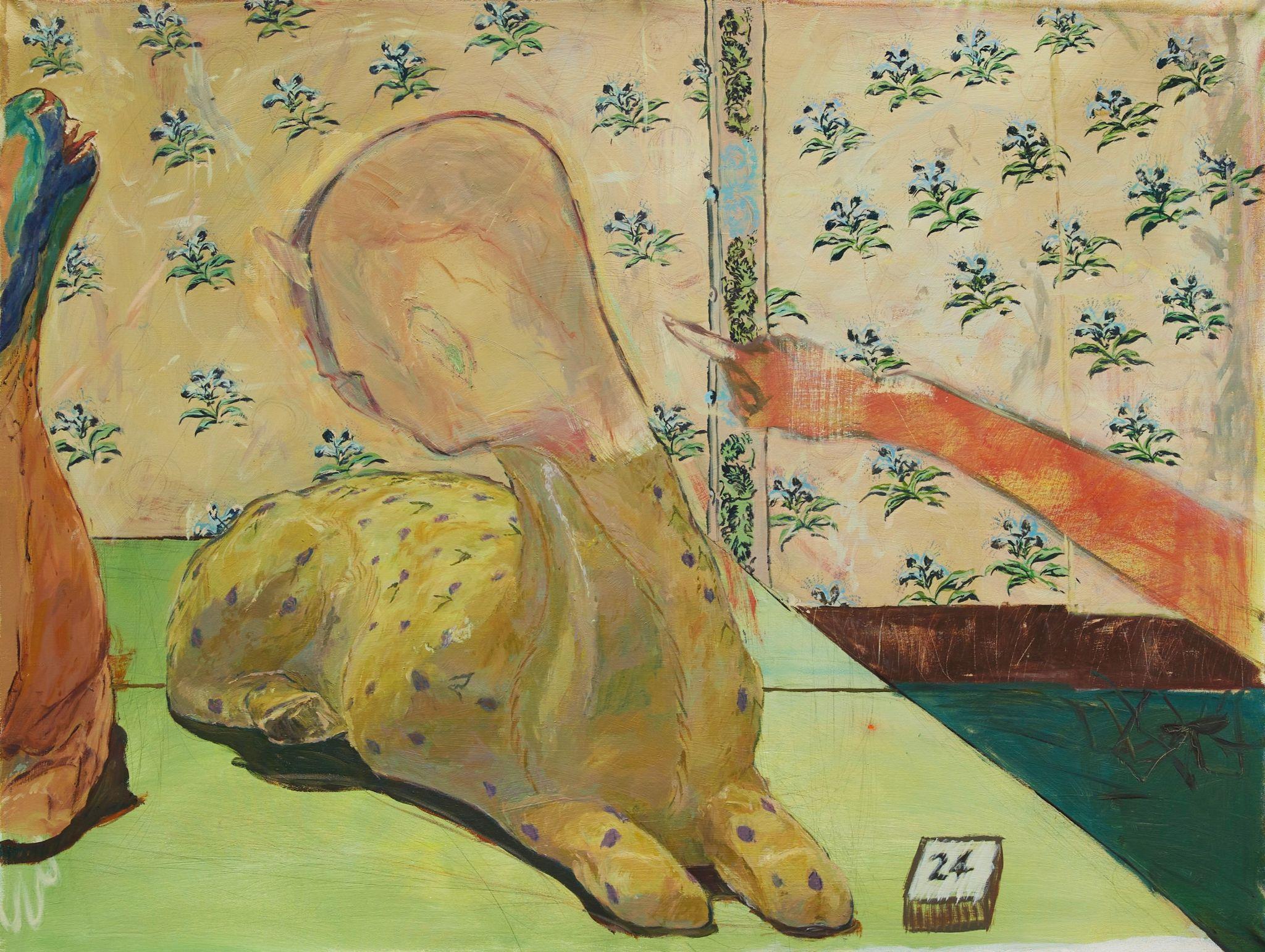Yuyang (Lily) Wei is a Chinese-New Zealander artist currently living and working in London. Lily’s current paintings celebrate her emotions of being part of the Asian diaspora and explore displacement, museum repatriation, movement and the concept of Hiraeth. Since the dawn of her creative career, Lily has participated actively in the art scene exhibiting in spaces such as White Conduit Projects in London as well as The Bath House.
Part of Lily’s practice also investigates the struggle of antique repatriation from the side of the origin country/ community. In an increasingly cosmopolitan society, citizens of all nationalities and cultures are becoming more local whichever country they are on the planet. However, by decreasing attention on cultural diversity and promoting the cultural homogenisation and commercialisation of culture, Encyclopedic museums are ignoring their own participation in unfortunate historical events; supporting cruel conquests under the guise of education. Foraging the museums of London and beyond, the artist searches for misplaced Asian antiques and interprets them her own way on canvas.
These two themes can be seen expressed in both of the paintings in which we are going to discuss today: Flavours of Exile, as well as She Waited for the Conversation to Finish with Great Tenderness.

In the first piece, with a height of 81 centimetres and a length of 65, this medium work of oil painting sits comfortably in front of the viewer’s face, like a small window to an alien dimension. We can see in the background, an array of sharply painted ceramic tiles, all decorative in nature. This garden of bold lines and patterns spur the viewer to the main subject before it, what seems like a lump of flesh, complete with blood vessels, and a veiny umbilical cord that connects to the rough drawing of a split pomegranate fruit. The appearance of simply drawn ants closest to the audience as well as a museum display number tie up this well-rounded piece, giving it some much needed balance and stability.
On the other hand, She Waited for the Conversation to Finish.. boasts a more anthropomorphic figure in its vanguard, with a yellow, deer looking creature that is being pointed at by an extended human-like finger and arm featured outside the painting. Its animal counterpart on the far left of this artwork opens its mouth in a silent scream or moan. The two paintings all display attributes of a man-made pattern (or the domestic environment) with a splatter of floral wallpaper filling up the background of this work and its museum number also featured on the right hand side. I enjoy the fact that the artist’s paintings are multi-faceted, inviting me not only to ponder the sight of the world within, but also ruminate on the imagined smell, sound, and perhaps even taste of the characters trapped on canvas.
After the initial viewing of Lily’s paintings, I was able to take a step closer, and further analyze the impact of her brushstroke. Overall, the use of the artist’s colors seem ancient, as if a piece of antique gone through a level of deterioration, or distress. The muted greens of She Waited.. combined with the cadmium seen in Flavours of Exile remind me of well-lived artists’ farmhouses, such as Vanessa Bell’s Charleston house in Firle, or Château Laurens of France. The impact of these hues evoke a sense of nostalgia and forgotten passion tying to Lily’s main theme of migration. Moreover, a sense of rhythm can be found in Lily’s paintings. Whether it be the floral wallpaper or purple spots, a repeated pattern increases complex visual flow therefore disrupting the viewer’s experiences with chaotic, dynamic energy. Lastly, through the motif of a table or platform, I was also receiving a sense of the ‘display’. By placing her subjects on what seems like a plinth, we become the observer, scrutinizing the object being placed before us. This composition seems to evoke emotions of vulnerability, and the age-old dance between the very human need for being seen, versus the shame of being exposed to public scrutiny.
Through interpreting and evaluating these two artworks, I believe that Lily’s creations convey elevated emotions through vigorous color-schemes and uncomfortable compositions of the subjects. Memory, or the lack thereof also features as a main theme, as the audience navigates what it means to be a multicultural individual with the artist. In her interview with the contemporary art and fashion magazine Altiba-9, Lily explains that she is inspired ‘most by Asian artefacts found in overseas museums’. These worn and weathered antiques with extraordinary backstories endow her artworks with the ‘fascination of the journey’, and allows for the artist to compare them to third culture individuals who have their own living stories to tell. As I gaze upon the estranged, turned-away face of She Waited.. in particular, I can see how this piece will benefit others of a similar, nomadic upbringing; to see themselves in Lily’s art and gain much-needed validation. This ultimately must be the intent of the creator.
Moving into the future, the artist looks forward to continuing her journey of introspection, while also gathering inspiration from the third-culture individuals around her through detailed surveys and casual conversation.



